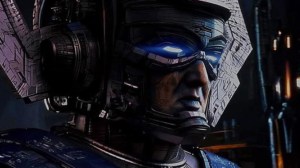The Walking Dead creator Robert Kirkman admits he may have made a “miscalculation” by creating fake covers and solicitations for future issues to conceal the book’s surprise finale, something he says was a “questionable decision.” Launched in 2003, the comic book that inspired the television series ended without warning when issue #193 closed with an adult Carl Grimes reading the story of his father — series lead Rick Grimes, who was killed off in the book’s penultimate issue — to daughter Andrea. After a blank final page with nothing but the words “the end,” readers turned to a multi-page letter from Kirkman confirming the end of The Walking Dead.
Videos by ComicBook.com
“That was a lot of fun, and I’m surprised that we pulled it off,” Kirkman told CartoonistKayfabe. “Years of interviews, where people would be like, ‘When’s The Walking Dead going to end?’ I would just go, ‘Never. It’s just never going to end, it’s going to go on forever.’ And in my head, I’m like, ’24 issues… 16 issues… 12 issues… 8 issues,’ as the years went on. And I feel bad about that, and I don’t enjoy lying, but to preserve a surprise like that? I feel like it’s important.”
“It was hard keeping it a secret, but it’s all about getting back to that place that excited me about comics,” Kirkman added. “About going into a comic shop, seeing a cover on the rack in the distance, and being like, ‘Wait a minute, what’s that? What’s gonna happen in that issue?’”
Until one month before the zombie comic released its final issue in July 2019, Kirkman estimates “there were maybe six people that knew Walking Dead was ending.” In on the secret was series artist Charlie Adlard, who created covers of forthcoming issues that would never release, including one showing Carl impaled by someone called “the Swordsman.”

It was a “questionable decision,” Kirkman admits of the so-called “lost covers” he later purchased from Adlard, knowing they would never be printed.
“I gave him story ideas. It’s the stupidest thing, too, because if you read #193, you can kind of see from those fake covers, ‘Oh, the story was going to go into this direction.’ It never was,” Kirkman added. “I could have put literally anything on those covers, no one would have known, but for whatever reason I thought, ‘I’ll just pretend that maybe adult Carl died, and here’s Sophia and his daughter at Carl’s grave, and here’s a shot of Carl with a sword stabbed through his stomach, that’ll be fun.’”
The only problem: retailers believed issues #194, #195, and #196 were genuine, not knowing the 72-page issue #193 was the book’s conclusion.
“We had to do that, which was great in that it kept the surprise. No one knew that that issue was the last issue,” Kirkman said. “No one even knew that that issue was gonna be massive, because it was $3.99 like every other issue, but then it arrives in stores and it’s squarebound and like the length of three or four issues, so we kept that secret as well.”
Kirkman continued, “The downside to that, though, is that the largest retailers are DCBS and Midtown Comics, and they do a ton of business through mail order. So your most valuable retail partners who order the most books had taken a ton of orders for issues that no longer exist, and they had to cancel those orders and refund those customers. So that part was possibly a miscalculation on my part.”
“The surprise of it all, I guess, was worth it in the end,” Kirkman added, “but I did have some retailers that were somewhat angry with me when it happened.”
In his goodbye letter, Kirkman explained he wanted the book to replicate the shock of a surprise death. He later said the television series, now heading into its eleventh season, will not end without warning like its comic book counterpart.
For all things TWD, follow the author @CameronBonomolo on Twitter.









